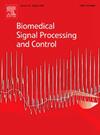Evaluating the impact of blood rheology in hemodynamic parameters by 4D Flow MRI in large vessels considering the hematocrit effect
IF 4.9
2区 医学
Q1 ENGINEERING, BIOMEDICAL
引用次数: 0
Abstract
Aortic hemodynamic parameters estimated from 4D Flow Magnetic Resonance (MR) velocity measurements are often estimated using a constant Newtonian viscosity, neglecting blood’s shear-thinning behavior. The aim of this work is to estimate and assess whether Newtonian viscosity is sufficient to quantify these parameters, given the non-Newtonian nature of blood. Additionally, we demonstrate that shear-thinning effects remain observable in large vessels despite artifacts commonly present in 4D Flow MR images.. To address this, we quantified the impact of blood rheology and hematocrit (Hct) on Wall Shear Stress (WSS), the rate of viscous Energy Loss (), and the Oscillatory Shear Index (OSI) based on velocity data obtained from 4D Flow MR images. Using a Hct-dependent power-law non-Newtonian model with experimentally derived rheological parameters, we analyzed these metrics across a broad range of Hct values at physiological temperatures in both in-silico and in-vivo MR datasets.
The results reveal significant differences between Newtonian and non-Newtonian models. In in-silico experiments, WSS and differed by up to +189% and +112% at systole, with reductions of −74% and −80% at diastole, respectively, while OSI differences ranged from −23% to −30%. For in-vivo data, WSS and deviations reached −44% and −60% at systole, ranging from −69% to +73% at diastole, with OSI differences averaging −21%. These findings highlights the importance of accounting for non-Newtonian blood rheology when estimating hemodynamic parameters from 4D Flow MR images in large vessels, enhancing the accuracy of cardiovascular disease assessments using in-vivo aortic data.
考虑红细胞压积效应的大血管4D血流MRI评估血液流变学对血流动力学参数的影响
从4D血流磁共振(MR)速度测量中估计的主动脉血流动力学参数通常使用恒定的牛顿粘度来估计,忽略了血液的剪切变薄行为。这项工作的目的是估计和评估牛顿粘度是否足以量化这些参数,考虑到血液的非牛顿性质。此外,我们证明剪切变薄效应在大血管中仍然可以观察到,尽管在4D Flow MR图像中通常存在伪影。为了解决这个问题,我们量化了血液流变学和红细胞压积(Hct)对壁面剪切应力(WSS)、粘性能量损耗率(ĖL)和振荡剪切指数(OSI)的影响,这些影响基于从4D Flow MR图像中获得的速度数据。利用Hct相关的幂律非牛顿模型和实验导出的流变参数,我们分析了这些指标在生理温度下的大范围Hct值,在硅和体内MR数据集中。结果显示牛顿模型和非牛顿模型之间存在显著差异。在硅实验中,WSS和ĖL在收缩期差异高达+189%和+112%,在舒张期分别降低- 74%和- 80%,而OSI差异范围为- 23%至- 30%。体内数据显示,收缩期WSS和ĖL偏差分别为- 44%和- 60%,舒张期为- 69%至+73%,OSI差异平均为- 21%。这些发现强调了在估计大血管4D血流MR图像的血流动力学参数时考虑非牛顿血液流变学的重要性,提高了使用活体主动脉数据评估心血管疾病的准确性。
本文章由计算机程序翻译,如有差异,请以英文原文为准。
求助全文
约1分钟内获得全文
求助全文
来源期刊

Biomedical Signal Processing and Control
工程技术-工程:生物医学
CiteScore
9.80
自引率
13.70%
发文量
822
审稿时长
4 months
期刊介绍:
Biomedical Signal Processing and Control aims to provide a cross-disciplinary international forum for the interchange of information on research in the measurement and analysis of signals and images in clinical medicine and the biological sciences. Emphasis is placed on contributions dealing with the practical, applications-led research on the use of methods and devices in clinical diagnosis, patient monitoring and management.
Biomedical Signal Processing and Control reflects the main areas in which these methods are being used and developed at the interface of both engineering and clinical science. The scope of the journal is defined to include relevant review papers, technical notes, short communications and letters. Tutorial papers and special issues will also be published.
 求助内容:
求助内容: 应助结果提醒方式:
应助结果提醒方式:


